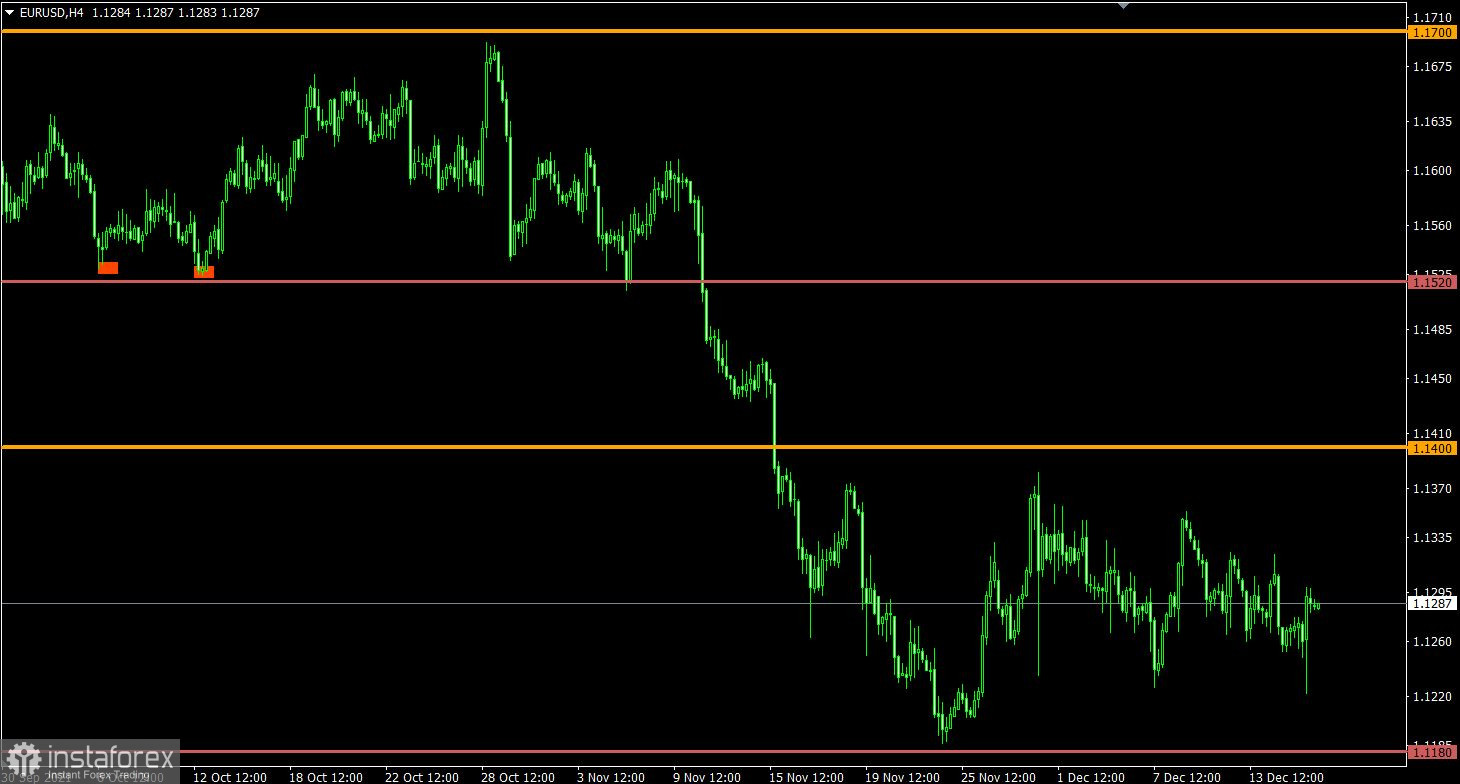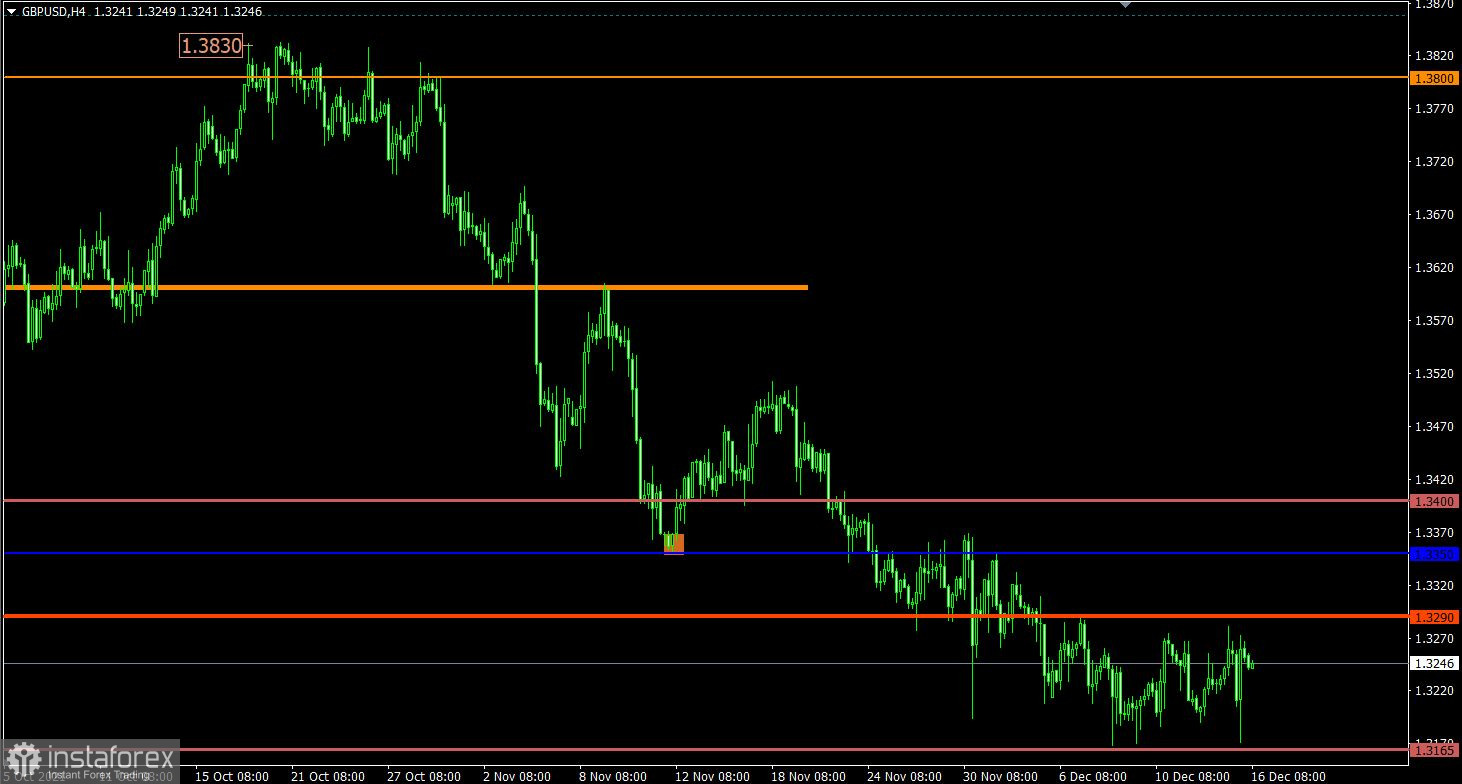Following the FOMC meeting, almost all parameters of the monetary policy remained unchanged. The only exception was the quantitative easing program, the volume of which decreased by another $ 30 billion. However, this does not surprise the market, since it was preparing for such a result. Investors were not interested in this but in the timing and number of refinancing rate increases next year. But with this question, everything is somewhat more complicated. The fact is that the Fed has limited itself to voicing certain expectations. That is, we are not talking about specific action plans, but about what monetary policy might look like if macroeconomic dynamics meet the expectations of the regulator. So, the Federal Reserve System expects that the refinancing rate will be increased three times over the next year. The quantitative easing program may be terminated in March or April. Apparently, this is pretty tough rhetoric, but it lacks any specifics. Moreover, the US regulator usually draws up an action plan for two years, but this time it was only about 2022. And not a word about 2023. Nevertheless, there is no doubt that the tightening of monetary policy will turn out to be somewhat more ambitious than it was assumed quite recently.
Against this background, it seems completely incomprehensible why the euro and the pound were growing, and not declining. First, this is a complete lack of specifics and only words about some expectations there as if it is not the Fed that sets the parameters of monetary policy, but someone else. Moreover, the regulator acts only as a kind of third-party observer trying to predict the further actions of the tracking object. Second, now it's the turn of the European Central Bank and the Bank of England, whose board meetings will take place today. And strangely enough, but just before the announcement of the results of the meeting of the Federal Committee on Open Market Operations, many reports appeared in the media that the European regulator may announce measures to tighten monetary policy. Although earlier, ECB representatives avoided this issue in every possible way, and diligently avoided any hints of such a possibility.
All this looks like purposeful stuffing, with the aim of manipulating the markets. In any case, given the Fed's announced plans, the European Central Bank will have to raise the refinancing rate at least four times in order only to equalize the parameters of monetary policies. It's hard to believe in such a thing. It is easier to believe in contact with extraterrestrial intelligence than that the European regulator will raise interest rates so rapidly especially if we take into account the sharply increased debt burden on all countries of the European Union. Such a sharp tightening of monetary policy can simply destroy them. Therefore, the growth of the US dollar, which everyone was waiting for, will still happen albeit with a slight delay.
The EUR/USD pair continues to move within the borders of the 1.1260/1.1355 flat despite all the speculation, signaling a characteristic uncertainty among market participants. So, a long-term finding of the price in a closed amplitude will lead to a purposeful acceleration sooner or later. The most suitable strategy is considered to be a breakdown of one or another border of the range in a four-hour chart.

Following its European counterpart, the GBP/USD pair moves within the borders of the flat, periodically demonstrating speculative interest. In this situation, a sell signal will come when the price is kept below the level of 1.3165 in a four-hour chart. On the other hand, a buy signal will be considered if the price is kept above 1.3300.
 English
English 
 Русский
Русский Bahasa Indonesia
Bahasa Indonesia Bahasa Malay
Bahasa Malay ไทย
ไทย Español
Español Deutsch
Deutsch Български
Български Français
Français Tiếng Việt
Tiếng Việt 中文
中文 বাংলা
বাংলা हिन्दी
हिन्दी Čeština
Čeština Українська
Українська Română
Română

